




Recipes, Rituals, and Crafts to Embrace the Magic of the Year
Emma Frisch, Jana Blankenship Photographs by Allison Usavage Illustrations by Emma Frisch and Jana Blankenship
Emma Frisch and Jana Blankenship have a kindred friendship from their shared experiences as mothers, entrepreneurs, and nature lovers. Observing a growing demand from families wanting to reconnect to nature, they created this fun and practical resource.
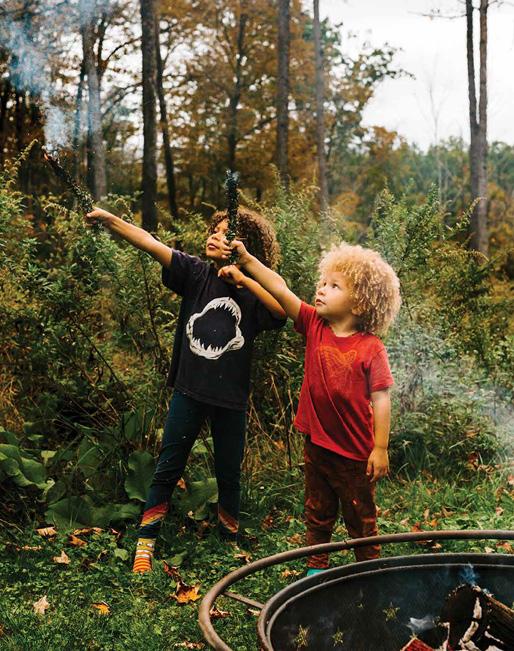
Seasonal Family Almanac gives families the tools to re-discover the soul-stirring magic that comes from living in tune with the seasons. Organized into twelve chapters and with content from a host of diverse contributors, this guide is an invaluable resource for essential wisdom and creative inspiration every day of the year.
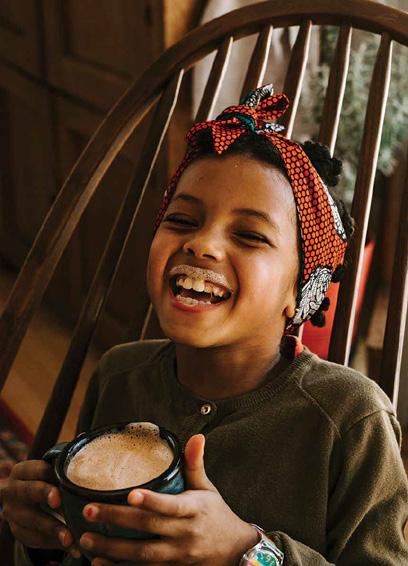

An indispensable guide and hands-on resource for families that want to joyfully build or deepen their connection with nature through a range of recipes for cooking, wellness, personal care, and crafts all year long.
• Over 40 delicious food and beverage recipes including Soothing White Pine Tea; Lunar New Year Dumplings; and Blueberry Lavender Crisp Bars
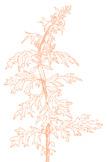
• Over 30 personal care and wellness recipes ranging from Violet and Dandelion Face Steam to a Newborn Care Kit, Clearing Chest Rub, and Forest Bathing Salts
• 25 crafts and activities including beautiful and easy twisted rope flower crowns, beginner-friendly botanically dyed capes, shadow puppets, and more
Emma Frisch weaves her love for adventure, foraging, and seasonal cooking into her mothering, art, and work. She is the author of Feast by Firelight: Simple Recipes for Camping, Cabins, and the Great Outdoors and with her husband cofounded Firelight Camps, a glamping destination in Ithaca, New York, where they live with their two daughters.
Jana Blankenship is a mother, founder of the plant-based clean beauty company Captain Blankenship, and author of Wild Beauty: Wisdom & Recipes for Natural Self-Care. She lives in New Paltz, New York, with her husband, two children, two dogs, and a cat.
From Nancy Lawson, author of The Humane Gardener, a first-of-its-kind guide that takes readers on an insightful and personal exploration of the secret lives of animals and plants.
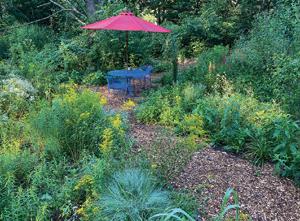
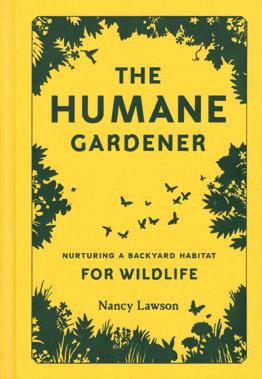
The voracious appetites of one-spotted tortoise beetles had helped him find exactly what he was looking for: stands of Monarda fistulosa a species of bee balm often referred to as wild bergamot and known in Lakota as “sweet-smelling leaf” or “elk medicine.” Unlike the insects, though, Keefover-Ring wasn’t planning to eat the plant; he just wanted a few leaves for chemical analysis as part of his ongoing graduate school project. The odor had reached his nose in such abundance because tortoise beetle larvae were grazing on the plants—an effect that KeefoverRing’s experiments later confirmed when he found that chewed-on wild bergamot leaves released twelve times more volatile compounds than those left intact. As members of the mint family, wild bergamot and other bee balms produce strong monoterpenes, the compounds that give essential oils their aroma and flavor, in tiny sacs on their leaves and flowers called trichomes. Just rubbing a leaf is enough to create powerful scent that keeps most other herbivorous insects and mammals at bay.
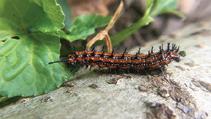
Upon closer inspection, Keefover-Ring realized that the tortoise beetle larvae were not only eating the plants but taking advantage of their defenses to make armor of their own. “I never knew anything about it, and I started looking at these cool little larvae with—as one of my professors called it— a club of crap on their little fork.”
Constructing a “fecal shield” from his own frass, larva attaches the turdy tactical gear to a pronged structure at the end of his abdomen and waves it around to scare off anyone with ill intentions.
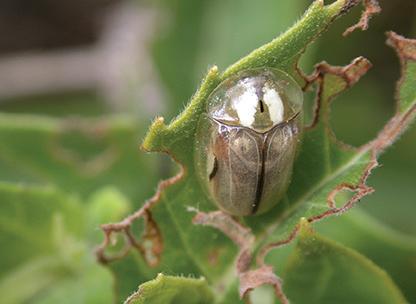
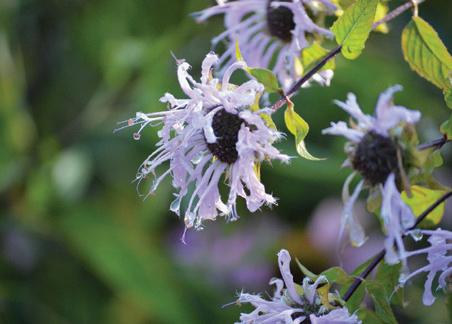
“How did that evolve? It kind of blows your mind,” Keefover-Ring says. “It’s really fascinating that they’re not only specialists which have evolved to eat bee balm, but then they go one step further; they defend

Trilling Chipmunks, Beckoning Blooms, Salty Butterflies, and other Sensory Wonders of Nature Nancy Lawson
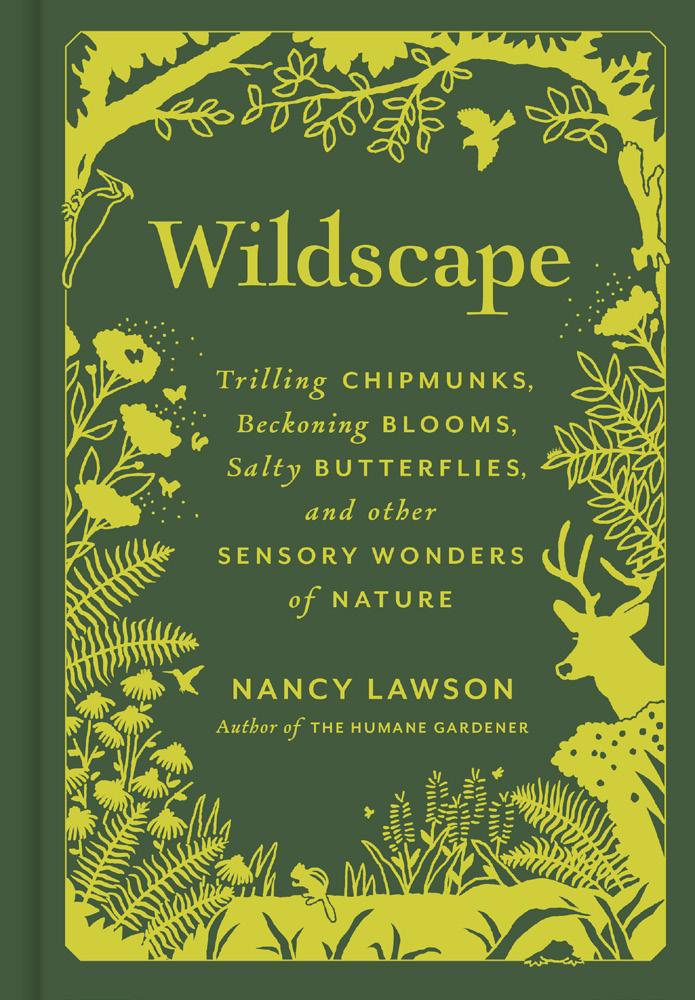
Nature writer and naturalist Nancy Lawson takes readers on a fascinating tour of the vibrant web of nature outside our back door—where animals and plants perceive and communicate using marvelous sensory abilities we are only beginning to understand. Organized into chapters investigating each of the five senses, Lawson’s exploration reveals a remarkable world of interdependent creatures with amazing capabilities.
You’ll learn of ultrasound clicks humans can’t hear, and ultraviolet colors humans can’t see. You’ll cross paths with foraging American bumblebees drawn to the scent of wild bergamot, urban sparrows who adapt their mating song in response to human clamor, trees that amp up their growth in response to deer and moose saliva, and a chipmunk behaving like the world’s smallest pole vaulter to nab juicy red berries hanging from the lowest parts of a coral honeysuckle vine.
Synthesizing cutting-edge scientific research, original inter views with animal and plant researchers, and poetic observations of her own garden, Lawson shows us how to appreciate the natural environment from the perspective of our wild neighbors right outside our door and beyond, and how to nurture the habitats they need to survive.
Nancy
It takes empathy, but by using our imagination we can begin to understand how different organisms perceive the world through their noses and antennae and tongues and feet—and also how they spit it back out again, adding ever-greater layers of complexity to the already crowded scentscape.
Following my own often-stuffy nose into scent explorations usually starts with keeping my eyes open for breaks in the usual patterns of my garden, a routine that led me to my first epic scatological show. Though I’d handled the doody duty on more than one occasion at local nature festivals, explaining to toddlers the nuances of coyote and deer poop, getting all up in the backside business of our wild neigh bors had long been at the bottom of my to-do list. My five-decade-long streak of innocence about such indecorous matters came to a halt one September afternoon when I rounded a corner to water some seedlings and found an orange-and-black cat erpillar resting on a log. Certain that this butterfly baby was the off spring of a mother variegated fritillary who’d laid eggs in front of me a few weeks before, I flattened myself at ground level to watch her through my macro lens. Soon the caterpillar was booking it over to a nearby violet, where she chowed down heartily and offered a close-up view of a bulge mov ing along her body as she ate. It wasn’t long before the remnants of the meal reached their natural conclusion, and what happened next was so fast and startling that didn’t trust my eyes. The caterpillar
24 25
A visual exploration and history of one of America’s favorite pastimes.
goes as far as to lease permanently parked Airstream trailers on some of its sites to attract campers who want to spend the night inside a cultural icon. This experiment suggests that prospective campers can show up without any equipment of their own: as with a stay at a hotel or roadside motel, a simple change of clothes and a toothbrush will do. No wonder that the daily repetition of chores once associated with sur vival has now been recast as a series of disembodied rituals that attempt to reconnect the camper with something that is largely lost. By now most of the old necessities—hiking to and clearing the site, hunting for game, collecting water and firewood—have given way to less arduous activities, such as parking the car, pitching cable-free pop tents, buying cold cuts at the campground store, hooking up electrical and sewer age conduits, and setting up patio chairs. Serviced by pervasive networks of infrastructure and populated with trailers and $300,000 RVs, campgrounds cele brate a unique form of American ingenuity in which intersecting narratives and desires (e.g., wilderness, individuality, access, speed, comfort, nostalgia, profit) become strangely and powerfully hybridized. To tell the history of the campsite is not to tell the story of any one specific site or even one specific campground, but rather to examine how this rugged cultural ideal came to be commodified into generic and largely replicated spatial patterns. It is to talk not only about campers but also about the crucial role that motor vehicles have played in shaping this narra tive—one that begins rather innocuously with early twentieth-century roadside bivouacs and culminates with the tightly organized loops of dedicated plots that define the modern campground. The following four key concepts provide a way to understand the radical physical and cultural transformations under gone in the very short span of 150 years.
 Martin Hogue
Martin Hogue
For camping enthusiasts, this fascinating (and packable) volume holds a comprehensive look at the origins of the practice and the gear that brings all these enthusiasts together.

From the early days of recreational camping in the late nineteenth century through the multitude of modern camping options available today, Making Camp explores the history and evolution of the popular activity through the lens of its most important and familiar components: the campsite, the campfire, the picnic table, the map, the tent, and the sleeping bag, as well as the oft invisible systems for delivering water and managing trash.
Find out how early nineteenth-century German peasants fashioned rudimentary sleeping bags by burrowing into bags full of leaves for the night. Look back over several millennia to learn about the progression of tents from animal skins, goat’s hair, and heavy canvas to featherweight nylon. Learn about the ways in which the skills to build and maintain a campfire have been displaced by the portable gas stove. Pinpoint the details of the essential campground map and its unique place in the camping imagination.
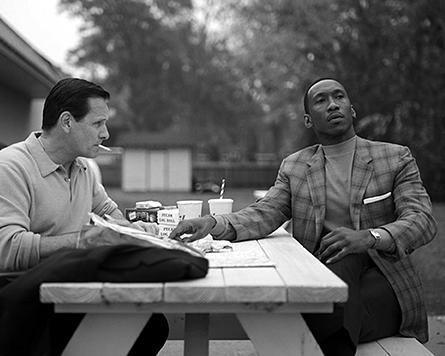

meeting at a massive picnic table on the White House grounds seems to bring new meaning to this ordi narily mundane experience. Though off-limits to the general public, there is something intensely familiar about this table—as if we had all sat there ourselves. Indeed, the table seems to humanize its powerful occupants, if not also curiously diminish them with its outsized components. These qualities of familiarity and abundance have made the picnic table an American icon. On the website of the Home Depot, buyers can choose from among hundreds of models, priced between $120 and $3,700. How can we possibly select from such a broad array of choices? And how can there be such disparity of pricing, given that all tables are structur ally alike? For decades, we have occupied picnic tables chosen by others, by the operators of car washes and rest stops and hospital cafeterias—and because their design remains almost flawlessly the same, they rarely disappoint.
This Is the Spot Nature has provided no comforts at all, and she launches her armies of insect life or her legions of chilly particles of air and water against the poor body without respite and without pity. —Warren H. Miller
For all its weight, bulk, and permanence, the histori cal antecedent of the picnic table is clear. For Professor Walter Levy, the classic image of the picnic is that of a daytime meal “typically eaten on a blanket on a fine patch of grass.” Iconic representations include the 1846 painting by Thomas Cole (1801–1848) called A Pic-Nic Party, an increasingly common scene for the period that is imbued with the Victorian flair of “a day in nature for feasting, amusements, privacy amid the masses, and freedom.”
Each chapter includes a broad range of visuals to help illustrate the rich history of camping and our collective devotion to it, including drawings, patents, diagrams, sketches, paintings, advertisements, and historical photographs. A must-have for avid campers, nature lovers, and all who seek to connect with the universe by sleeping under the stars.
and people began to groove. Performers in wildly exuberant, colorful, and flowing outfits strutted by, and skateboarders whizzed around the fountain.
I have always perceived this park as party park. There is usually commotion, chaos, music, and something mildly shocking happening. Pride parades, Free Britney concerts, protests, and free joints for fully vaccinated New Yorkers. In other words, people seem to be at the forefront of this park, and have never really paused and thought of it as a natural space. So when came across the Local Ecologist—a blog of wide-ranging urban ecological
Sunshine Finding Connections with Plants, Parks, and the People Who Love Them Ishita Jain Foreword



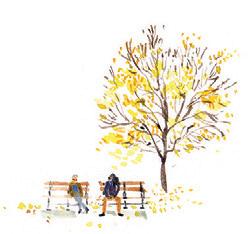
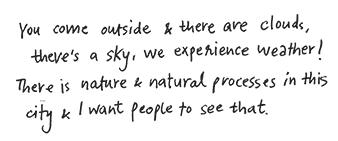
 by Wendy MacNaughton
by Wendy MacNaughton

When Ishita Jain relocated to the visually overwhelming and concrete-filled New York City from New Delhi, India, she found solace in parks and gardens and started thinking about how important these places are to city residents’ sense of peace. In Searching for Sunshine, Jain follows her curiosity and creativity to provide a vibrant compilation of essays, illustrations, and interviews centered around the simple yet compelling theme of why and how plants and green spaces create such meaning for us.
Whether living in a setting that is urban, rural, or somewhere in between, everyone can find enjoyment in the beautiful illustrations and stories gathered here. Featuring conversations with experts and plant-lovers alike, including scientists at the New York Botanical Gardens, groundskeepers at the famed Green-Wood Cemetery, shoppers at the beloved Union Square Greenmarket, a director of NYC Parklands, a florist, and more, Jain’s exploration of plants and parks in New York City demonstrates how nature is vital to all experiences of our lives.
An illustrated, heartfelt journey into answering the simple but vital question “Why do plants and green spaces make us happy?”
Pintonato.
The Ultimate Encyclopedia Ilaria Demonti
Illustrations by Camilla Pintonato
Discover all there is to know about sheep in all their woolly glory in Sheepology, a delightfully illustrated guide ewe will flock to again and again!
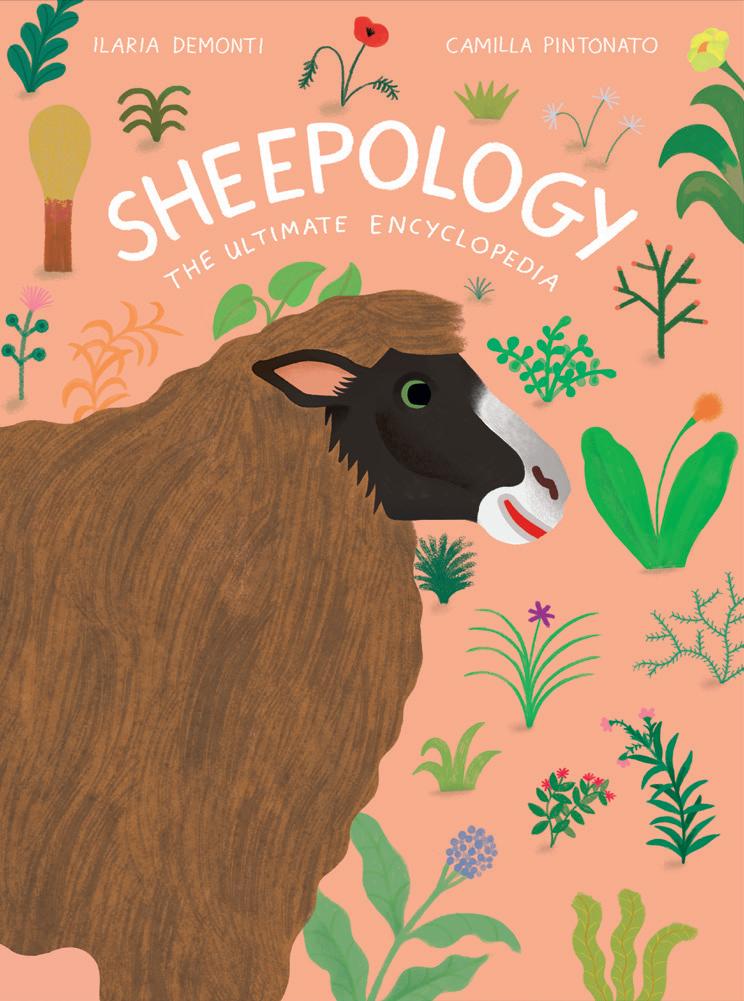
For instance, did you know that sheep do not like to be alone and get along well with other animals? Or that a sheep was the first mammal to be cloned by humans?
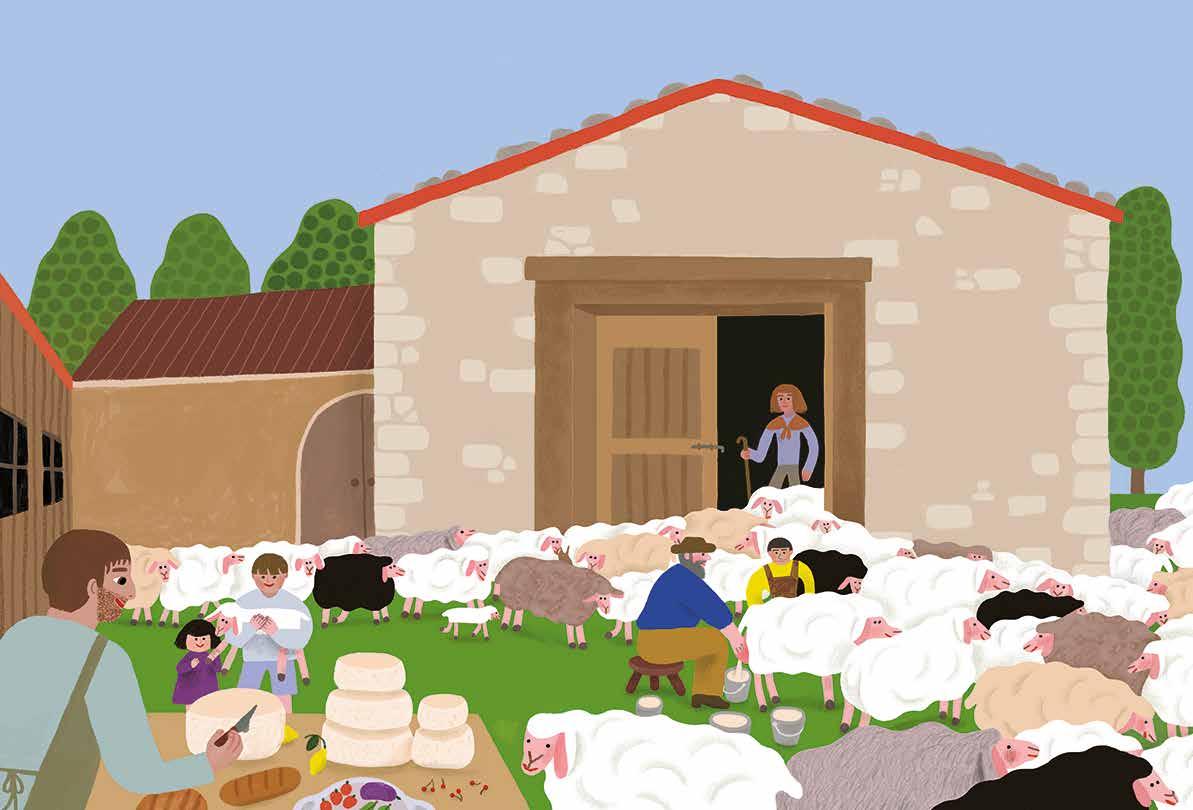
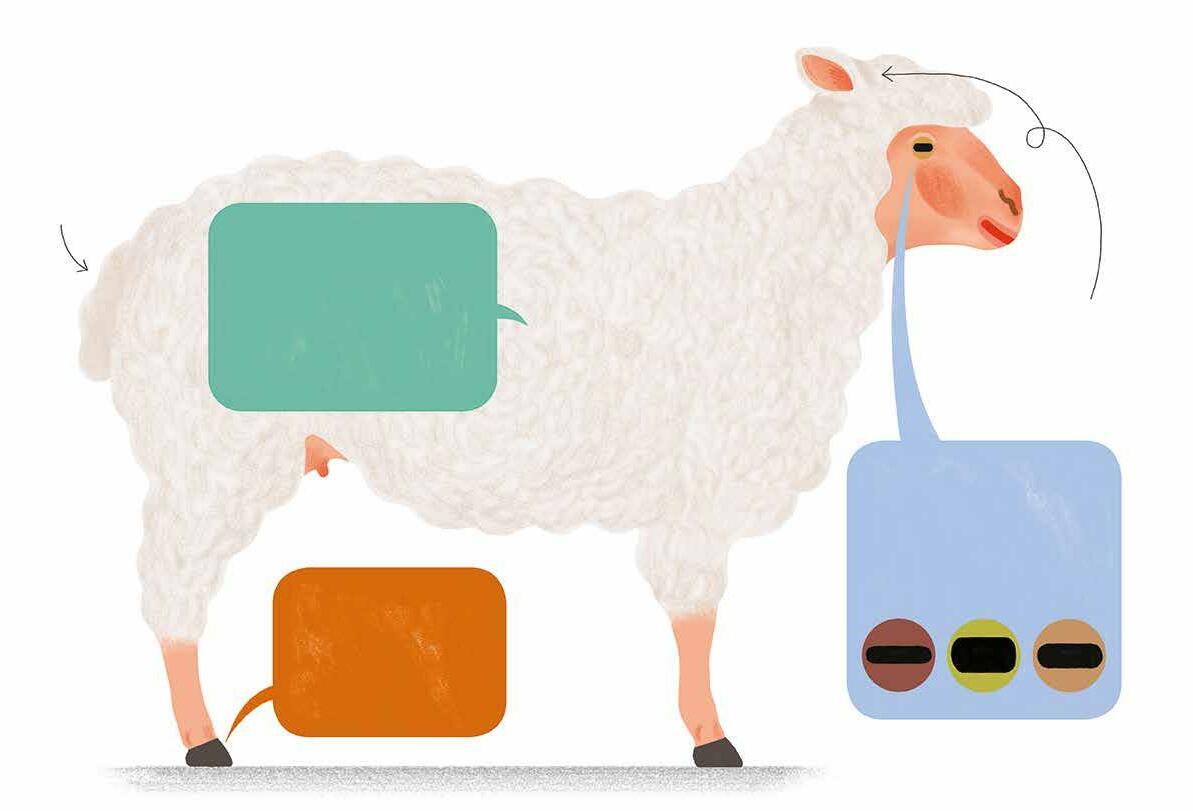

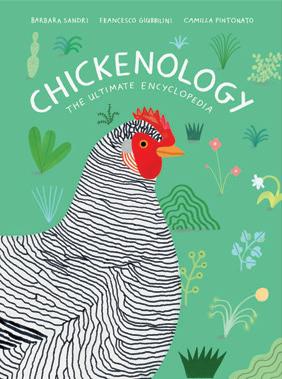
Have you ever wondered how sheep’s milk turns into cheese? Or how sheep are shorn and wool is made into cloth?
These and other intriguing and engaging facts about this lovable animal can be found in Sheepology, a visual encyclopedia and follow-up to Chickenology and Pigology. Nature- and animal-loving readers of all ages will find something to learn and love about these fascinating farm friends.
Ilaria Demonti is an author, illustrator, and literary agent based in Milan, Italy. She wrote and illustrated Il sogno di Hokusai and The Workshop of Leonardo da Vinci, and illustrated Wendy and the Wallpaper Cat, written by Jason Hook.
Camilla Pintonato is an author, illustrator, and graphic designer based in Venice, Italy. Her love for sheep inspired this book, but she likes drawing other animals, such as chickens, pigs, rabbits, and donkeys. Her books include Chickenology, Pigology, Full Moon, and Wally the World’s Greatest Piano-Playing Wombat
Welcome to the wonderful world of sheep! Sheepology is filled with incredible sheep facts told in a playful tone by Ilaria Demonti, with endearing illustrations by Camilla
A Journal for Single Moms

Beth Raymer
Illustrated by Laura Harrison

There are an estimated 15 million children being raised by single mothers in the United States. Yet single mothers are deeply underserved when it comes to celebrating their triumphs and sharing the trials and challenges of being a single parent in today’s world.
Acclaimed author, journalist, and single mom Beth Raymer hopes to change that. She brings her signature wit, honesty, and wisdom to this unique resource that gives single mothers the most important tool of all: a voice.
This thoughtful journal encompasses both an inspiring personal reflection on the single-motherhood journey and a practical guide for any single mom—whether by choice, following divorce or widowhood, working, stay-at-home, or any other personal circumstance—to feel empowered and confident. In addition to featuring inspiring quotes from a wide range of women, the journal includes prompts that explore the consciousness and experience of single moms, wherever they are in their journey toward building satisfying and successful lives with their children.
A beautifully designed guided journal specifically for single moms, by critically acclaimed author and single mom Beth Raymer.
I want to call the dangers “obstacles,” but that would be a kind of lying. We can’t transcend the dangers, can’t rise above them. We must go through them and hope we won’t have to repeat the performance.
As single mothers, we often find ourselves falling into rigid routines. Keeping a very tight schedule, often for years at a time, can seem like the only way to keep our lives on track. By doing things like picking up our child immediately after work and putting in more hours after our child goes to bed, we sacrifice spontaneity, and all the spunk and flavor it can shake up.
1. 2. 3.
List three ways you could make room for more spontaneity in your life.
Beth Raymer is the author of critically acclaimed memoir Lay the Favorite: A Memoir of Gambling, which received rave reviews. Raymer has an MFA in nonfiction writing from Columbia University and lives in New York City with her young son, Junior.
Laura Harrison is an animator and painter with MFAs from the School of the Museum of Fine Arts, Boston, and the School of the Art Institute of Chicago. Her work has appeared in various festivals including the New York Film Festival, Ottawa International Animation Festival, and many others. She lives in Chicago, Illinois.

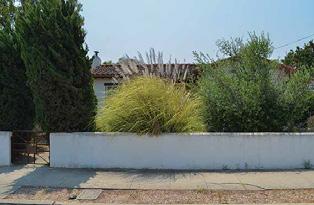
Cultivating Our Connection with the Natural World Félix de Rosen

The garden provides a powerful, generous way of looking at the world. Through stories and essays, this gracious volume, written in a highly accessible tone, invites readers on a journey to understand gardens as places where we build mutually beneficial relationships with the living world around us.

As beautiful spaces, gardens fill us with hope and wonder. As gathering places, they nurture friendships and communities. Thoughtfully crafted, they make us pause and appreciate our surroundings. Full of edible plants, they nourish us. Full of diversity—human and nonhuman—they connect us with the polychromatic world in which we live. They make us feel at home in our own bodies, in our cities, and on our planet.
Each chapter in this book is dedicated to a specific idea or element of the garden, from places where gardens grow (i.e., a driveway in San Francisco, a bathtub as a planter) to garden management (why some lawns need watering every few days and some gardens can go almost a full year without irrigation) to color and texture (how fine-textured plants like grasses can be used to unify a space) and everything in between. Hundreds of gardens from all corners of the globe are included, photographed in glorious full color.



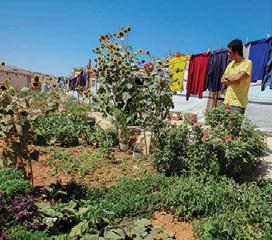
Perfect for home gardeners, landscape designers, or as a gift for the gardener in your life, this is an ode to the wonder, design, and habitat of gardens and an inspiration to nurture meaningful relationships with the natural world around us.
Félix de Rosen is an ecological designer and artist, and graduate of UC Berkeley and Harvard University. His practice, Polycultura Studio, is based in Oakland, California, on traditional Ohlone territory.

Essays and stories to inspire us to nurture diverse, meaningful relationships with gardens and landscapes.
A Shopper’s Guide to Artisans and Their Crafts by Region
Suzanne Wales
A celebration of artisanal craft, Made in Spain spotlights individual independent craftspeople and artisan makers throughout Spain. From jewelers to furniture makers, textiles to footwear, this unique guide takes us on a bountiful journey, exploring each craft and maker in depth.

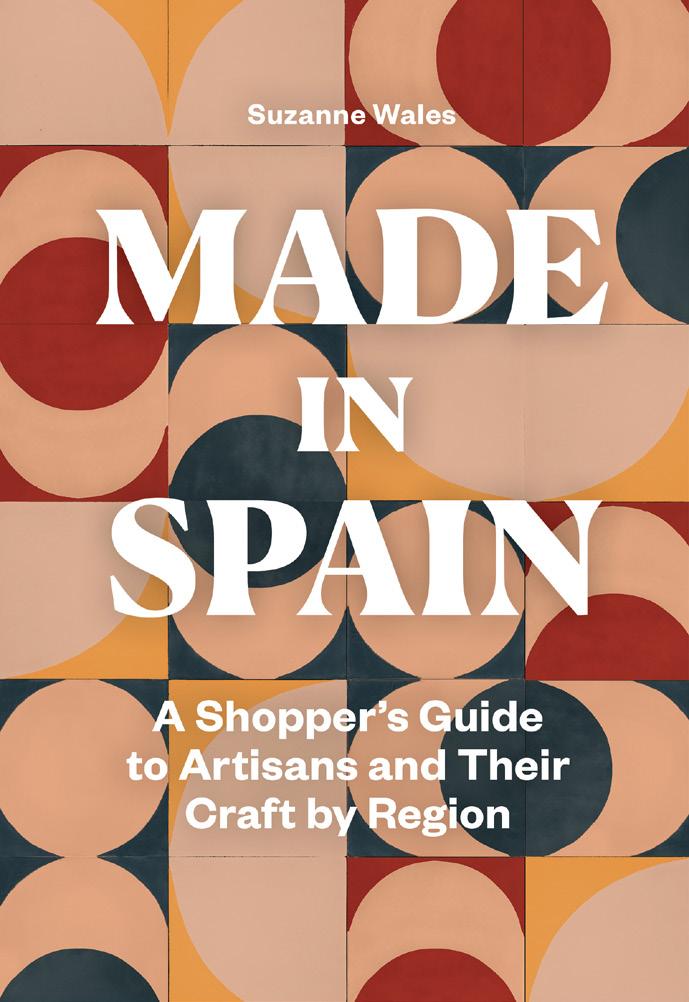
Turn these gorgeous pages to learn more about some of Spain’s well-known and hidden-gem art and artisans, including:
• Dazzling Huguet tiles handmade since 1933
• Multidisciplinary textile artist Adriana Meunié
• Capas Seseña, designer of high-fashion capes for women and men
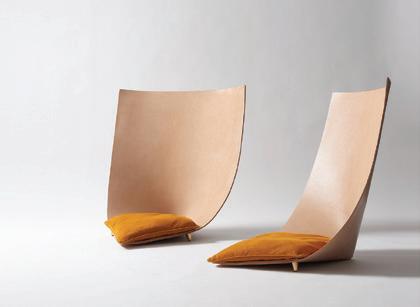
• Carmina Shoemaker, family manufacturers on the island of Mallorca since 1866
• Helena Rohner’s handmade jewelry inspired by nature

• José Ramírez, carrying on the tradition of handcrafted classical and flamenco guitars through five generations
• And more
A distinctive, sumptuous, and informative guide to the craftspeople and artisans of Spain, with a focus on ceramics, jewelry, leather goods, clothing, textiles, and shoes.
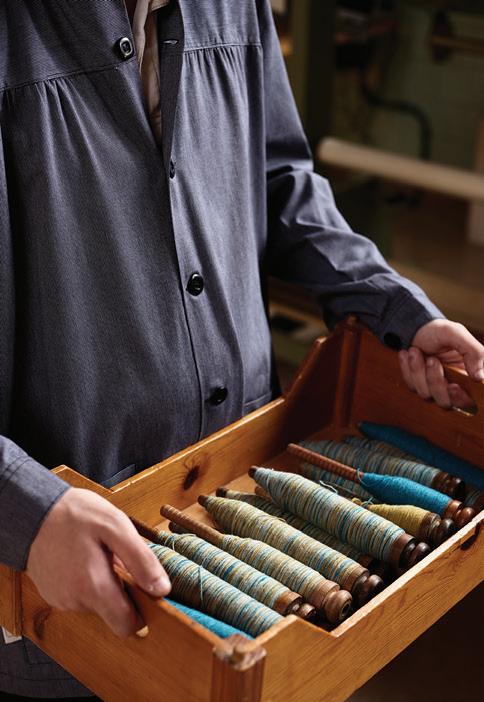
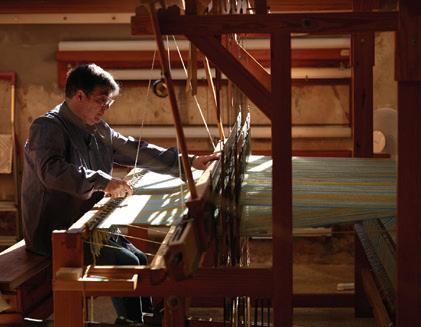
Although surrounded by vineyards that produce grapes for Catalonia’s famous cava sparkling wine, the town of Igualada prospered by another product—leather.
From an industry supplying horse tack to European royalty, only a few factories remain today. The historic warehouses and workshops of Rec, the neighborhood that accommodated the local leather industry, is
Part art guide, part travelogue, each chapter includes lush color photographs that explore each featured artisan from regions including Barcelona and Catalunya, the Balearic Islands, Valencia, Madrid, the Basque region, Galicia, and Andalucía.
Suzanne Wales is a communication specialist, with a focus on architecture and design. A bilingual Spanish/Australian citizen, she has been resident in Barcelona for more than twenty years, working across a wide range of media. Her stories on architecture and design regularly appear in leading international publications. She has created content for luxury brands and niche designers alike, attracted to the well-made, the cleverly thought-out, and the impeccably designed. She’s written extensively on Barcelona, including city guides published by Phaidon and Frommer’s.When not at her desk, she can be found showing visitors the aesthetic richness of Barcelona through bespoke walking tours and experiences.

Sarah Akinterinwa
This illustrated dating guide by cartoonist Sarah Akinterinwa, rooted in her experiences as a Black woman in her late twenties, encourages readers to be introspective, honest, and practical in their love lives. Through vignettes with scenes from modern dating, the book’s main character walks the reader through the ins and outs of being single, defining what you want in a partner, navigating dating apps, the value of therapy, contending with family expectations, and remaining optimistic about finding a relationship that’s right for you.


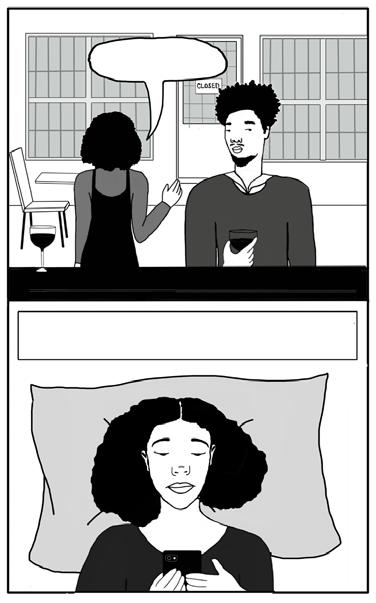

The book includes cheeky illustrated sidebars and commentary, such as:
• A recipe for the perfect partner
• Updated love languages

• Dating affirmations you didn’t know you needed
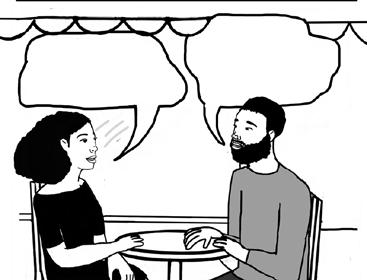
• Advice for taking yourself on solo dates
• And more, all with an inclusive perspective on race, sexuality, and body image
A funny and affirming illustrated guide, in New Yorker cartoonist Sarah Akinterinwa’s signature style, that offers a unique approach to finding love (or not).
The stories, practices, and tips in this guide offer support for the lovelorn millennial, and anyone wading through the challenges of dating and being single in today’s world, leaving the reader with the recognition that there might not necessarily be “one” perfect partner or way to be in a relationship, but rather many possibilities—in dating and in life.
Sarah Akinterinwa is a British cartoonist, illustrator, and writer. She started her career in 2020, during the first lockdown of the COVID-19 pandemic, by creating the comic Oyin and Kojo, which now features in the New Yorker. Her work explores dating, relationships, identity, politics, and navigating adult life as a young woman of color.
A landmark visual exploration of nature printing, featuring 45 different techniques and hundreds of astonishing rare images.


of course, he did not dis close his secrets—and through observation of the prints themselves, we can imagine his working process as follows. Kniphof arranged the plants on flat surface to yield a natural, unaffected appearance. Everything characteristic had to stand out; every little detail, often deemed insignificant by amateurs, was given attention.
The plants were pressed and dried, as if being prepared for preservation in herbarium. Next, a smoothly planed board was covered with a flat layer of cloth or leather, soaked in printing ink (the finest lampblack and linseed oil), and the dried plant was carefully placed on top. The whole thing was covered with waste paper and light pressure was applied. After removing the waste paper, the dyed plant was lifted off with the help of tweezers and transferred onto a preprepared sheet of paper. Any flecks of color were masked with paper; slightly moist piece of paper, already displaying a printed signature, was placed on top; and the whole thing was pressed. If strong roots or woody stems were to be part of the impression, the piece of paper was moistened more heavily at the relevant point, and pressure had to be applied slowly and gradually, to avoid the paper tearing. The use of thin but sturdy paper was a prerequisite for success. In every aspect, the plants are printed so cleanly and correctly that out of the thousands of sheets that have passed through my hands, only encountered few which showed double-printing in minor places.
The individual plants are used several times for printing. Many prints are completely identical; in others, realize some leaves are missing from the second impression; and sometimes the foliage of the same plant is slightly different. In many cases, when comparing with other copies of the book, one finds that new plants were used for printing. It is very appeal ing to compare these variants. At first glance, one can recognize a plant that has grown quite differently, perhaps even more developed, as the sibling of the other, because both have been so realistically reproduced with their particular features. The value of these illustrations lies in the fact that the plants, often depicted with flowers and roots, show their natural habitat, their bends and twists, their branches and ramifications, their hairs, spines, and thorns in fidelity to nature that, until then, even the greatest artist had not been able to reproduce. Even if they do not quite show their details naturally—and only under special lighting, incident lighting, or upon close inspection

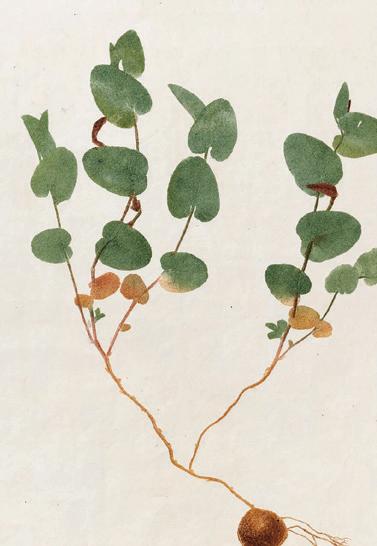
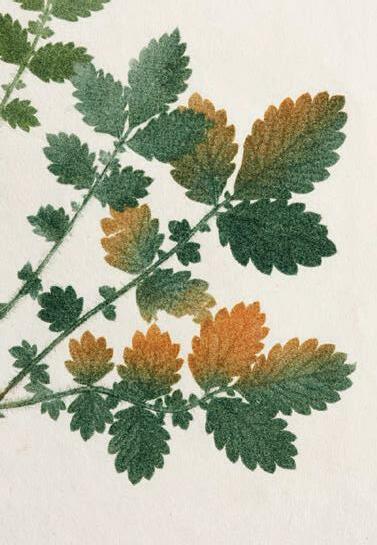
150 Years of Nature Printing
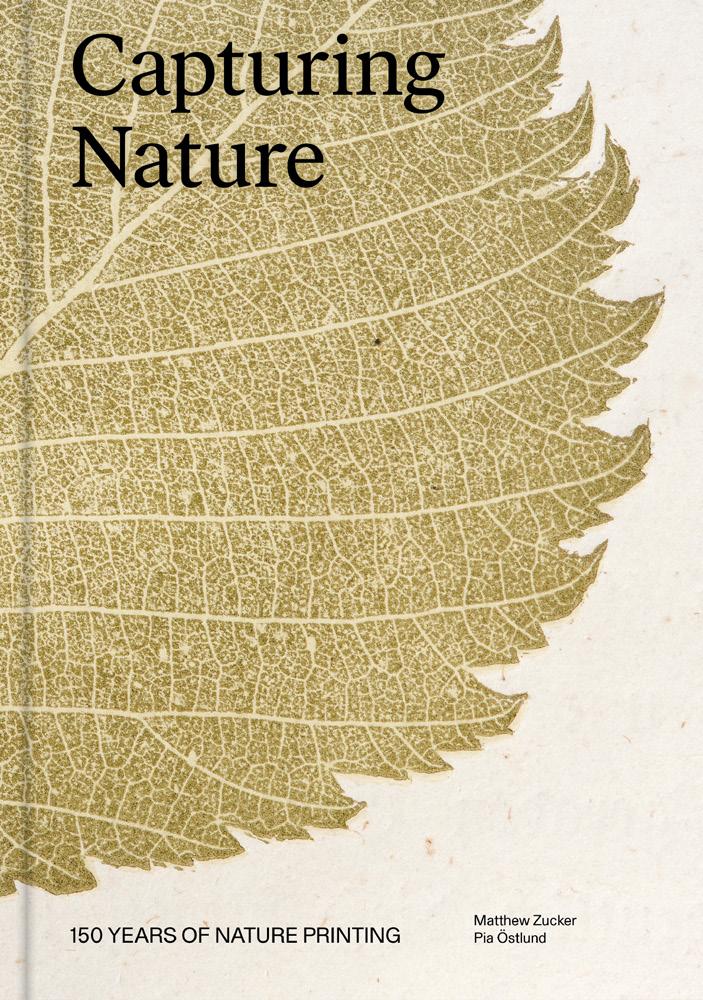
Matthew Zucker, Pia Östlund


Hailed as the earliest precursor to photography, nature printing is the practice of using impressions from the surface of natural objects such as leaves, flowering plants, ferns, seaweed, snakes, and more to produce an image. Editor Matthew Zucker has spent decades curating the most extensive collection of nature prints ever assembled, with more than 13,000 images across 130 rare and seminal works, including journals, published books, unique manuscripts, American currency, and instructional texts related to nature printing from 1733 to 1902.
This gorgeous volume, co-edited with Pia Östlund, explores Zucker’s collection, allowing readers to see nature prints presented side by side for the first time and enabling unique comparisons while creating a visually stunning journey through the developments over a 150-year period in printing methods, including photography and cyanotypes. The ultimate guide to nature printing, this is a beautiful reference work for scholars, artists, designers, botanists, and anyone interested in nature, botanical illustration, and printing.
Founded in 1940, since 2006 Zucker Art Books is led by Matthew Zucker. With one foot anchored in antiquarian books, Matthew stepped with the other into contemporary books, continuing to publish commissioned artists’ projects and multiples, as well as organizing focused exhibitions highlighting rare examples of an artist’s output. He lives in Alford, Massachusetts.
Pia Östlund is a Swedish researcher, writer, designer and printmaker based in London. Pia has revived a lost nature printing process not used since the nineteenth century to create intricate, lifelike images of plants on paper. Since 2001, she has been a consultant to Chelsea Physic Garden, London, and Oxford Botanic Garden.
Designer, artist, and educator Mitch Goldstein’s experience as student and teacher give guidance and inspiration to help students get the most out of design school.
chapter two learning curiosity
You attend design school to learn how to be a designer, right? That sounds very straightforward, but it raises the question: What will you actually learn? The answer is rather complicated, but the short version is that you will learn lots and lots and lots of things. No matter which specific discipline of design you major in graphic, industrial, new media, interactive, spatial (just to name a few) the basis for all of them is the same. Most undergraduate programs will have you go through some version of a foundation year, which is a catchall term for classes that cover the basics of visual art and design. Usually, you will have classes in drawing, flat or 2d design, sculpture or 3d design, and possibly some time-based design as well (like animation or film).
You might also have some general technical classes on software and equipment, in addition to history or other liberal arts classes. But you are not just learning how to
(And How to Teach Them)
Mitch Goldstein
Foreword by Jarret Fuller
Life as a design student is filled with questions. Rochester Institute of Technology Associate Professor of Design Mitch Goldstein has many answers, shared in clear, clever, and sage advice that is helpful for students at any level of their education, as well as anyone thinking about attending design school and wondering what it’s really all about.
For design students and art professionals, Goldstein is a brilliant resource for real-world thoughts about design school and creative practice. Drawing on sixteen years of teaching design and his popular “Dear Design Student” Twitter project, Goldstein explores all aspects of how to get the most out of the school experience and beyond as a creative professional.
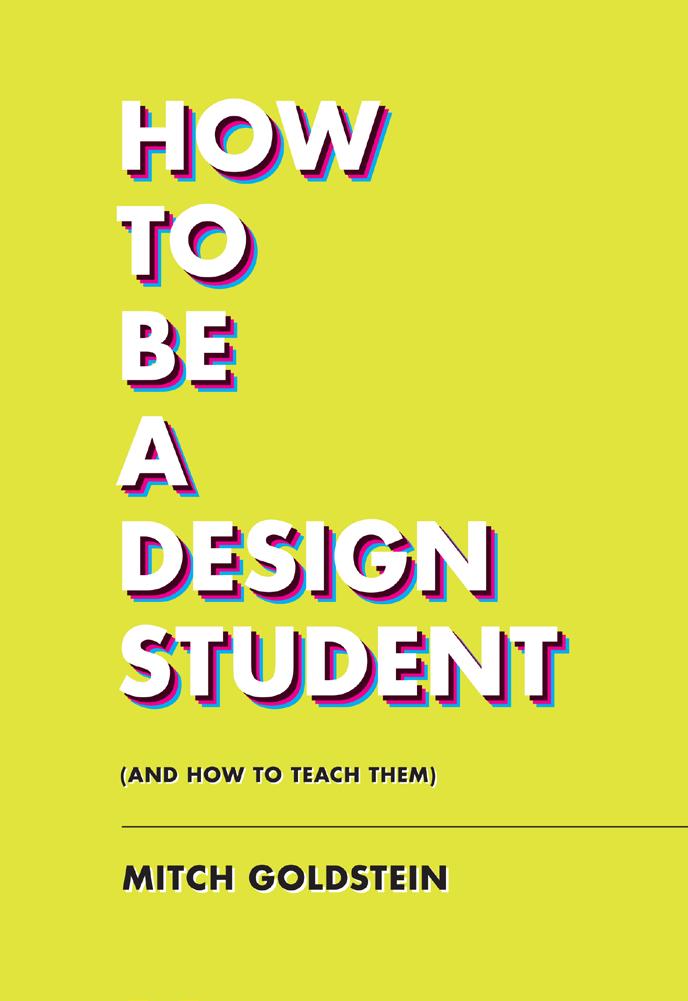
From collaboration and critiques to practice and process, this is an inspiring roadmap for design students as well as a valuable guide for design professors to help them understand how to shape curriculum from a student’s perspective and better the collaborative experience.
tourists. They understand the good and bad of where they live. They are fluent in this place, not just in terms of the language, but in terms of culture they understand all of the local culture, because they are a part of the culture. For each class you take, you will need to decide: Are you a tourist, a traveler, or a citizen? You can think about how tourists, travelers, and citizens experience a place the same way students at design school experience their classes. There’s nothing wrong with any of these options; each kind of person simply wants different things out of a visit to a new place the same way you will have different expectations and desires for every class you take, major studio or otherwise. You are not going to love every class you take at design school and that will include your required, major classes. But it is very important that you are a citizen of the major you’re in; you need to have full ownership over the curriculum and what you are learning. And, just as you may not like every single part of the city you are a citizen of, you may not like and enjoy every class you take in your major. However, as a citizen of your discipline you do need to own your major, to give it a proper amount of attention and to actively understand what is happening in every one of these classes, the same way citizens pay attention to what is happening around them in their city, because it directly affects them. Casually skimming through a class like a tourist means you will get a lot less out of it than if you acted like a traveler and really explored the topic.
EVEN A CLASS OR A PROJECT THAT YOU HATE CAN STILL BE WORTHWHILE: IT CAN TEACH YOU WHAT KIND OF WORK YOU DON’T WANT TO DO. 120 121
Goldstein’s insightful essays cover such topics as:
• Why go to design school
• What actually happens in your classes during your time at design school
• What kind of assignments you can expect
• How critiques work
• What you’re actually expected to do on a daily basis
• How to translate ideas into paying client projects
• How to make things that will get you a job
• And much more
Mitch Goldstein is a designer, artist, educator, and author based in upstate New York. He is an associate professor at Rochester Institute of Technology, where he teaches in the College of Art and Design. He has written about design education for years, with articles published in Communication Arts, Adobe 99U, and AIGA.
29
Finding a bumblebee without wings in her garden, Sasha is determined to help it survive, leading to an unexpected friendship. Sasha, Molly the cat, and Bea the bee share a joyful summer together and discover that you don’t need wings to fly. When the time comes to say goodbye to Bea, Sasha finds a meaningful way to honor the life of her tiny friend.
The Bee Without Wings is a timeless story of friendship and loss for young readers, beautifully illustrated by author Amberlea Williams. This warm tale includes an activity for creating a bee pollinator garden, along with information on how to care for early spring bees.

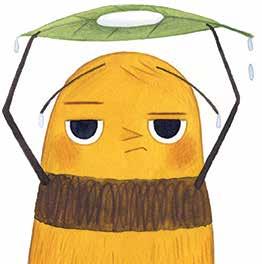





An unexpected friendship between a girl and a wingless bee warmly teaches young readers about friendship and loss in this heartfelt tale for fans of Charlotte’s Web and The Honeybee.
son, and cat.
A Critique of NYC’s Supertall Towers from Top to Bottom Eric P. Nash


Photographs by Bruce Katz
New York City’s penchant for building skyward has reached new heights with its crop of supertall towers—those that rise at least 984 feet above the sidewalk. The city that never sleeps is also the city that never stops building ever higher, from the Woolworth and Chrysler buildings of an earlier race to the top to today’s super-luxury aeries of 57th Street’s Billionaires’ Row and the towers of the World Trade complex in Lower Manhattan.
Bruce Katz’s extraordinary photographs capture a dozen of these self-styled odes to wealth and power, alongside Eric P. Nash’s incisive critique documenting the evolution of the skyline, past and present, and the supertalls’ transformative effects on the contemporary cityscape. Among the twelve buildings featured are One World Trade Center, Three World Trade Center, 30 Hudson Yards, 35 Hudson Yards, One57, 432 Park Avenue, 53West53, Central Park Tower, and One Vanderbilt.
Part architectural guidebook and part critique, Sky-High documents the supertall towers that are transforming New York City’s skyline as well as its streets.



Eric P. Nash was a researcher and writer for the New York Times for twenty-five years. He is the author of several books about architecture and design, including Manhattan Skyscrapers, MiMo: Miami Modern Revealed, and New York’s 50 Best Skyscrapers, and an architectural tour guide in New York City, where he lives.
Bruce Katz is an architectural photographer whose work has appeared in Architectural Digest, New York Magazine, Landscape Architecture, and the Washington Post. Based in New York City, he was on the faculty of the International Center of Photography, and several of his images were recently acquired by the New-York Historical Society.
Lead-in P+G (magenta): Lorem ipsum dolor sit amet, consectetur adipiscing elit. Suspendisse ornare, mauris ut scelerisque volutpat, turpis ex commodo lorem, quis sodales erat velit id erat.
Subtitle
Author Name
Lorem ipsum dolor sit amet, consectetur adipiscing elit. Suspendisse ornare, mauris ut scelerisque volutpat, turpis ex commodo lorem, quis sodales erat velit id erat. Nullam sodales ac orci in fringilla. Suspendisse elementum risus ligula, et porttitor magna varius at. Morbi at ligula justo. Proin aliquam orci sodales risus hendrerit commodo. Ut condimentum molestie libero, sit amet fringilla odio porttitor sed. Pellentesque bibendum leo mauris, quis pellentesque sapien finibus eget. Pellentesque fermentum cursus tortor. Quisque arcu dolor, posuere at egestas vel, fermentum a diam.
sample art sample art
sample art sample art
sample art sample art
sample art sample art
Sed feugiat, felis sit amet dignissim efficitur, odio nisi cursus arcu, non mattis tortor augue ut lorem. Etiam vel sagittis arcu. Aliquam consequat nibh nisl. Morbi sit amet elit at lacus tristique posuere sit amet at elit sit amet dignissim. 40 words Pub
Also Available
Recent Main Title 1
Format HC or PB 978-1-61689-000-0 $00.00 / £00.00 Rights: Wo R ld
Recent Main Title 1
Format HC or PB 978-1-61689-000-0 $00.00 / £00.00 Rights: Wo R ld


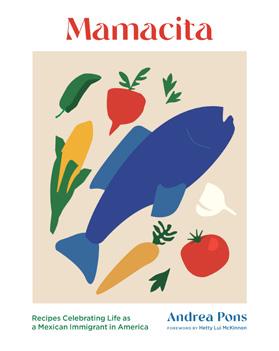




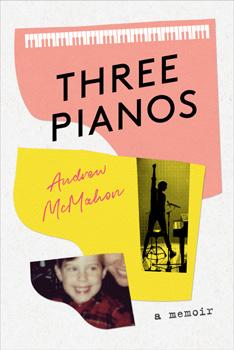




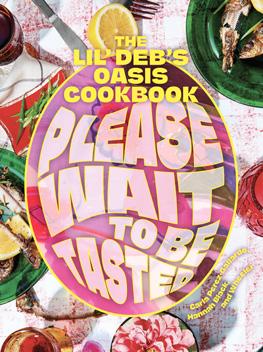






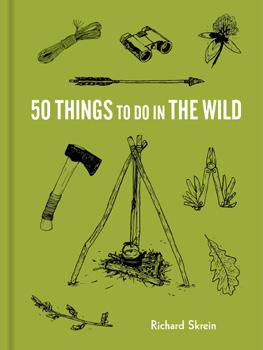

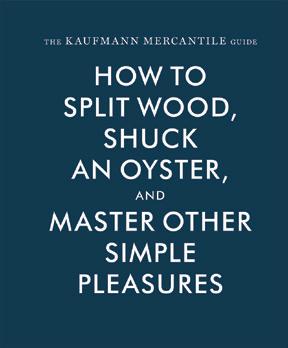
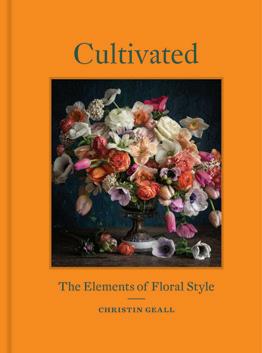
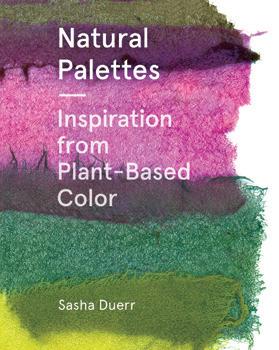


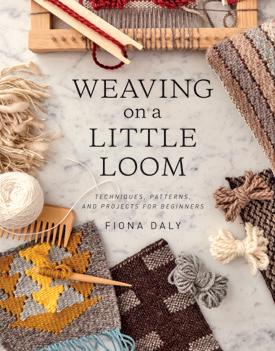


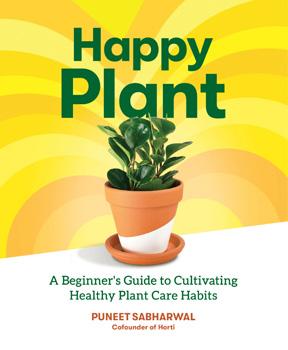
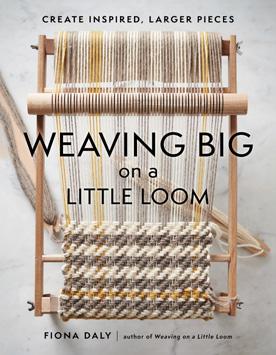
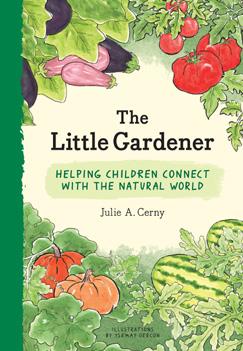
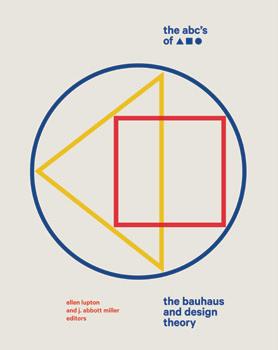

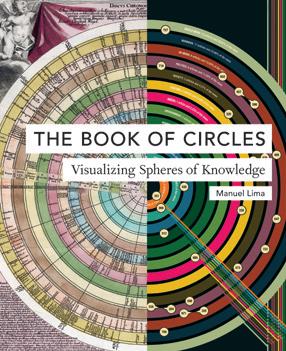


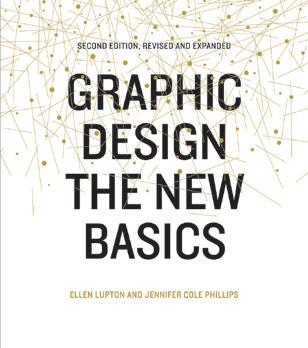

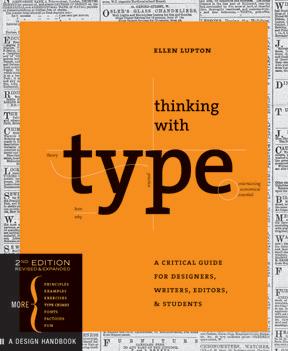




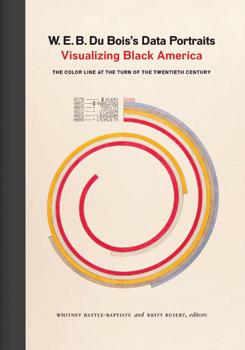
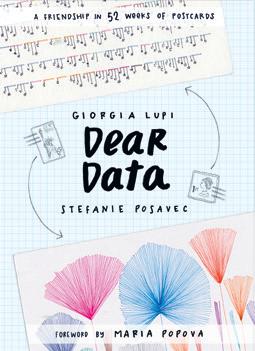







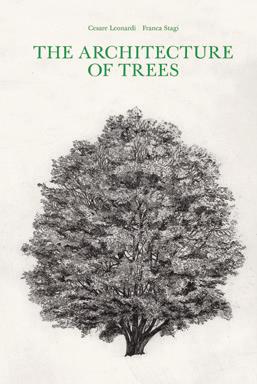
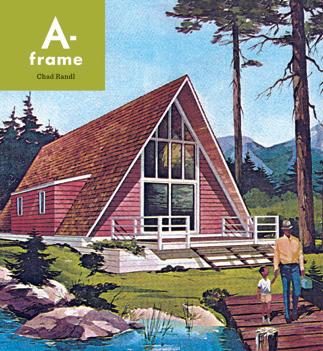



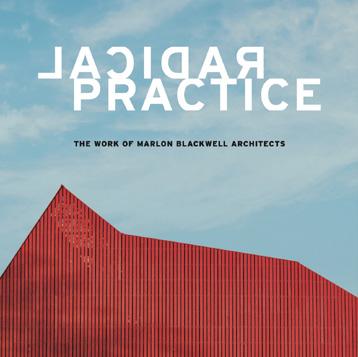





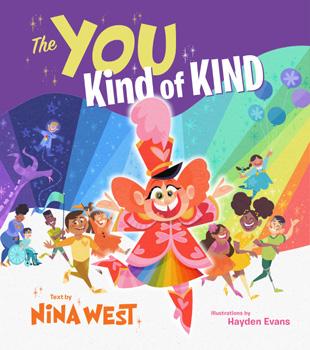


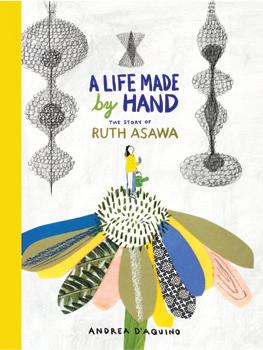
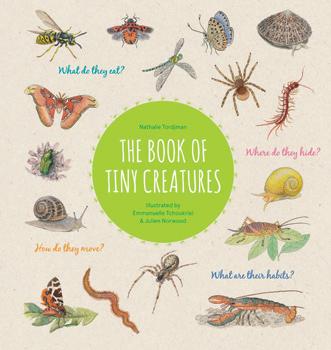



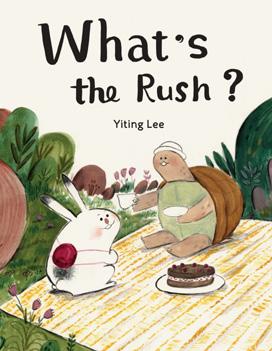

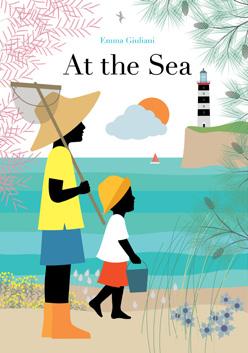
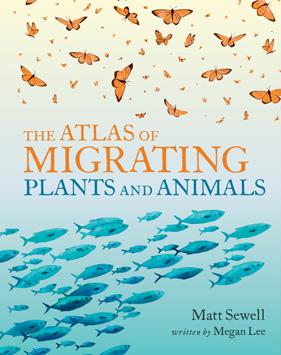
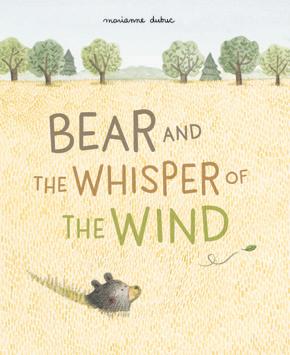
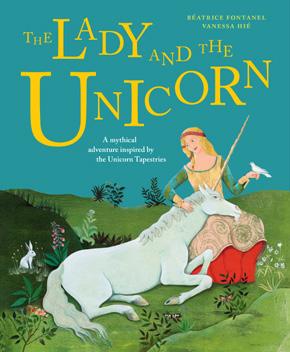

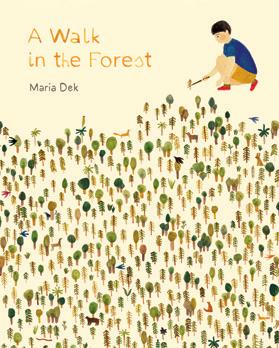
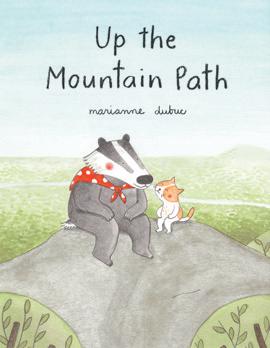

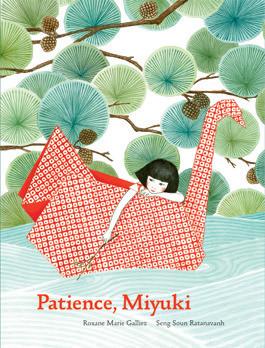


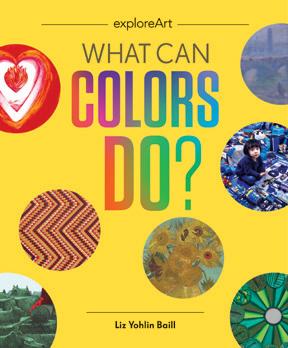






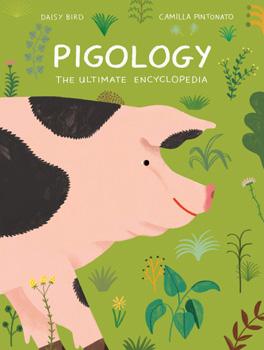
Butterflies of the World
My Nature Sticker Books PB / 978-1-61689-465-8 $7.99 / £5.99
Animals of the Savanna


My Nature Sticker Books PB / 978-1-61689-788-8 $7.99 / £5.99
My Nature Sticker Activity Books present a range of interactive activities and stickers that keep children entertained for hours. A quiz at the end of each book tests their knowledge of the fun facts they have learned.
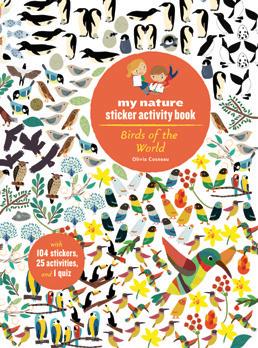
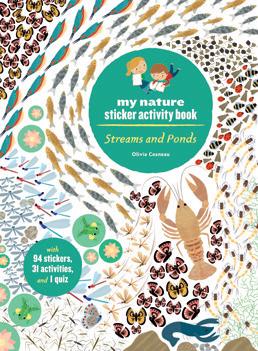

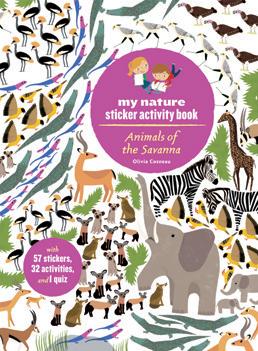
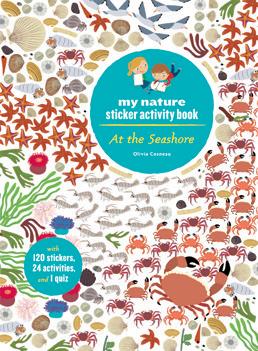
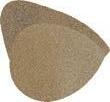
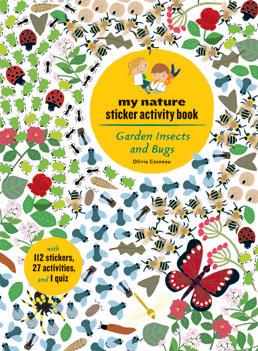
“The first time you show your little nature lovers these books, do not let them know there are stickers involved. Because these are the rare activity books that can hold their own on the quirky, information-packed writing and exquisite artwork alone.”
—New York Times Book Review
At the Seashore
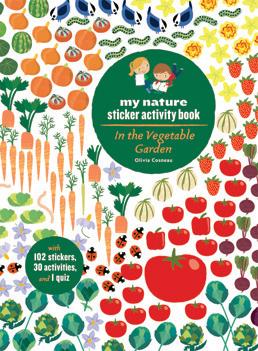
My Nature Sticker Books PB / 978-1-61689-461-0 $9.99 / £7.99
Birds of the World
My Nature Sticker Books PB / 978-1-61689-566-2 $7.99 / £5.99

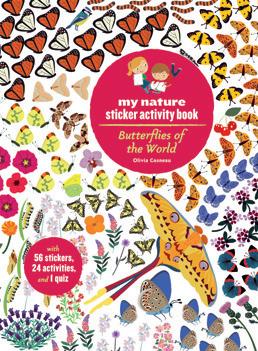

In the Ocean
My Nature Sticker Books PB / 978-1-61689-669-0 $7.99 / £5.99
Garden Insects and Bugs
My Nature Sticker Books PB / 978-1-61689-664-5 $9.99 / £7.99
In the Age of Dinosaurs
My Nature Sticker Books PB / 978-1-61689-469-6 $7.99 / £5.99
In the Forest
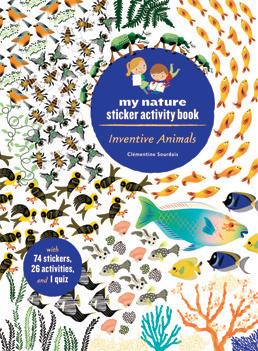
My Nature Sticker Books PB / 978-1-61689-785-7 $7.99 / £5.99
In the Vegetable Garden
My Nature Sticker Books PB / 978-1-61689-571-6 $7.99 / £5.99
Inventive Animals
My Nature Sticker Books PB / 978-1-61689-898-4 $7.99 / £5.99

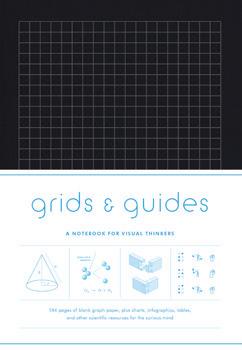
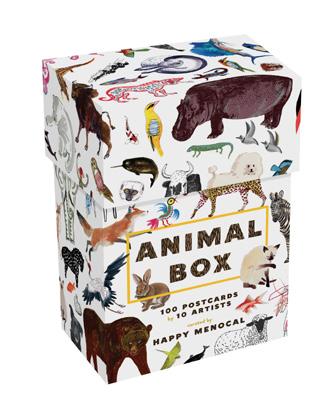

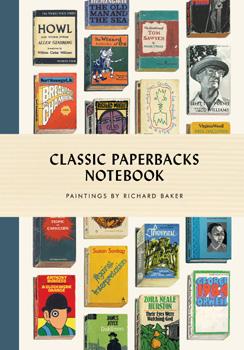
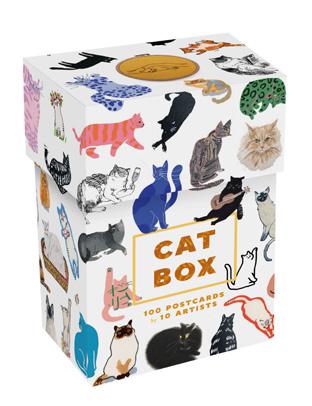

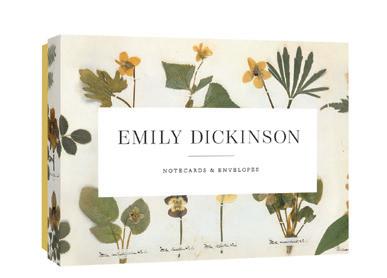
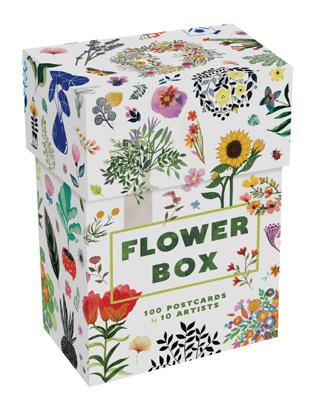
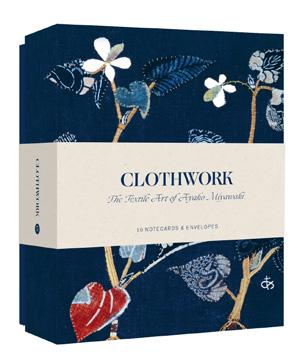

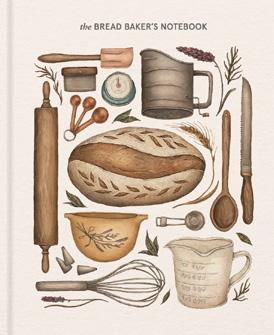

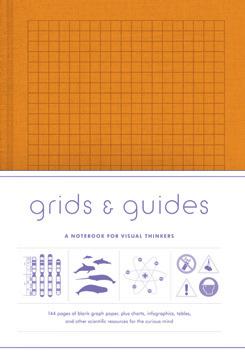

At

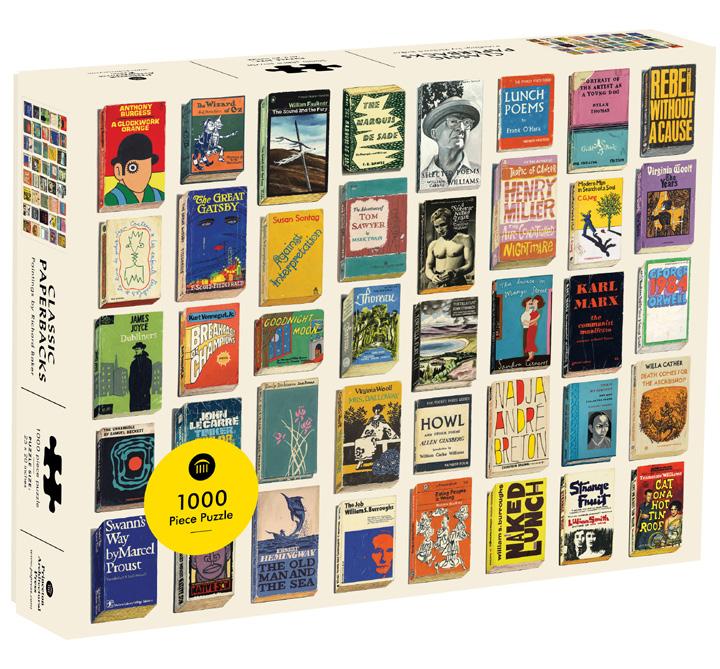
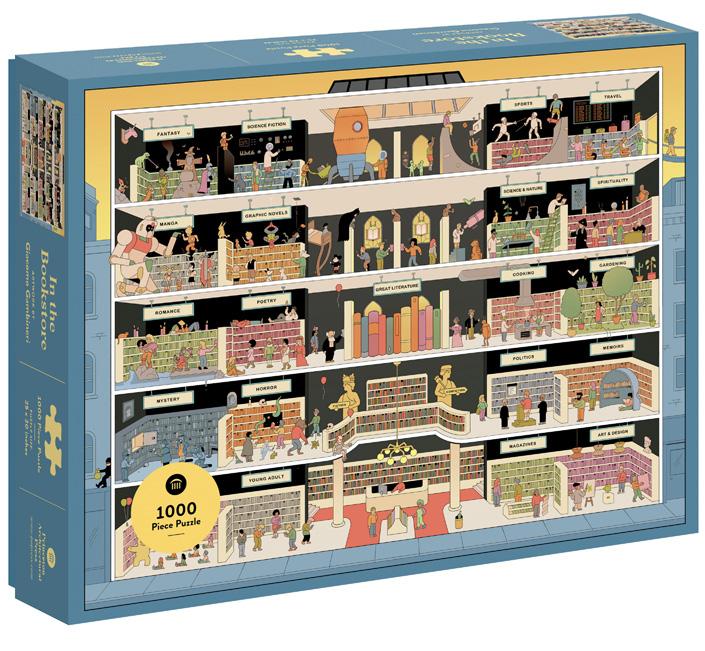
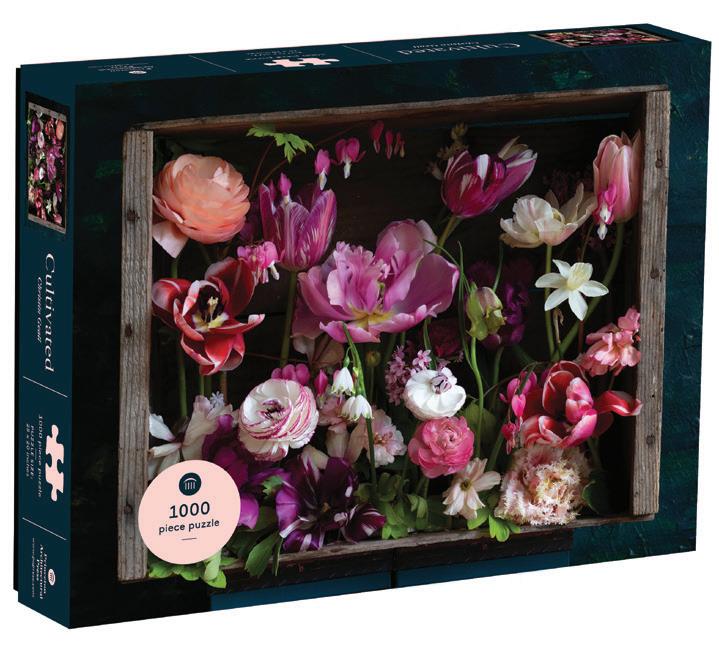


In the Museum, 1000 Piece Puzzle 978-1-64896-085-7 / $16.95

Pigology, 1000 Piece Puzzle 978-1-64896-163-2 / $17.95
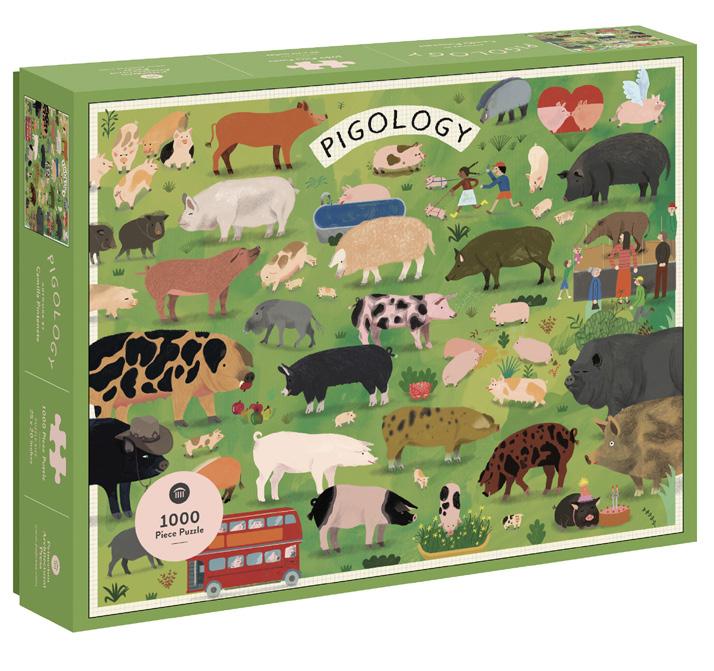
Classic Cookbooks, 1000 Piece Puzzle 978-1-64896-170-0 / $17.95
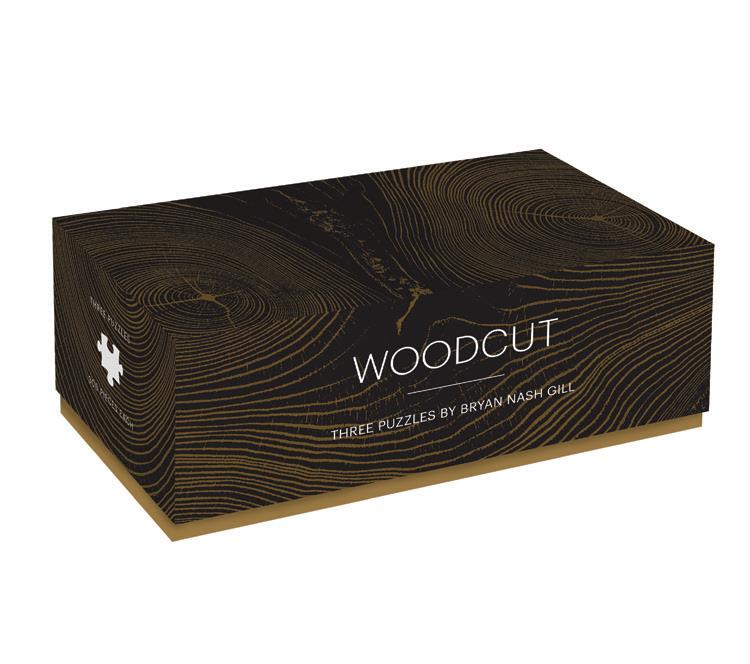
In the Winter, 1000 Piece Puzzle 978-1-64896-172-4 / $17.95
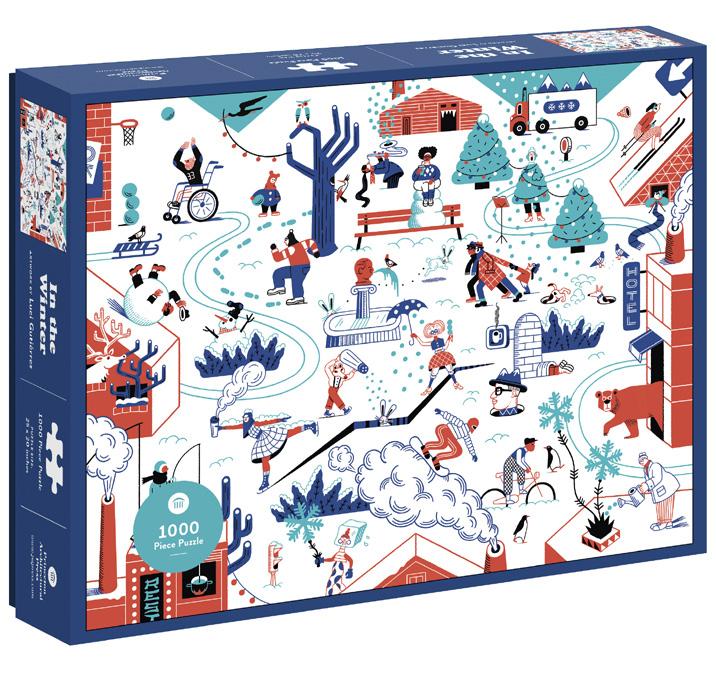
Woodcut: Three Puzzles 978-1-64896-093-2 / $29.95
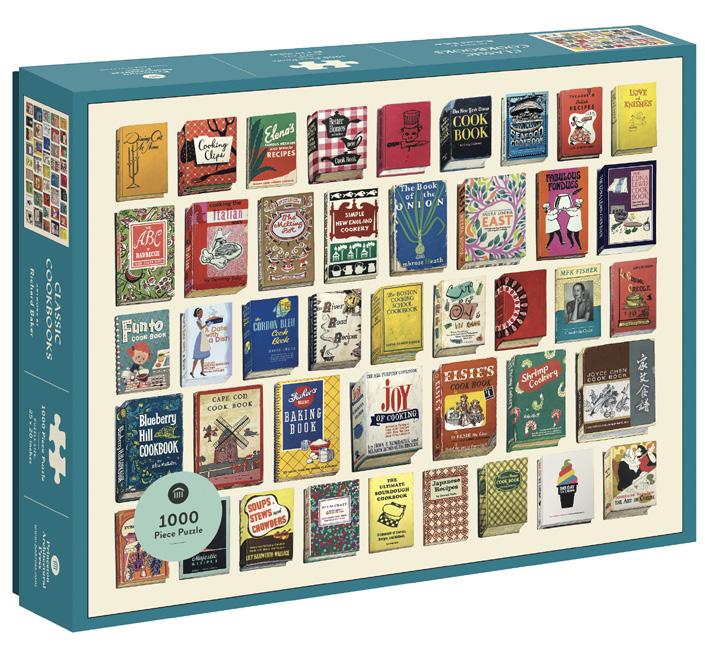
Connected: Three Puzzles 978-1-64896-096-3 / $29.95
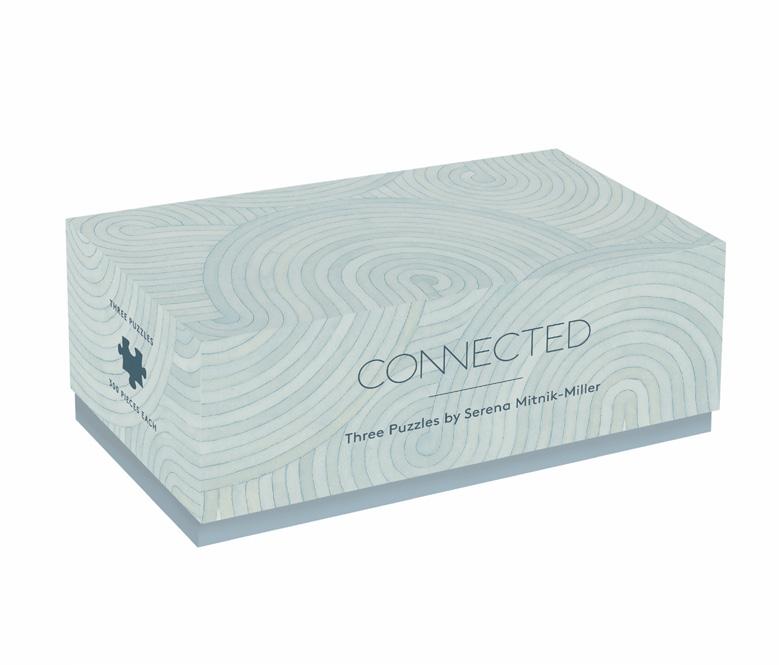
40 Knots and How to Tie Them 17
50 Things to Do at the Beach 17
50 Things to Do in the Urban Wild 17
50 Things to Do in the Wild 17
50 Things to Do with a Penknife 17
50 Things to See in the Sky 17 60-Second Cocktails 16
A
ABC’s of Triangle, Square, Circle, The 18
A-Frame 19
A Garden’s Purpose 8 Akinterinwa, Sarah 10 A Life Made by Hand 20 All of Us 20
Animal Box 23 Animals of the Savanna 22 Architectural Gardens 19 Architecture of Trees, The 19 Atlas of Amazing Birds, The 20 Atlas of Migrating Plants and Animals, The 20
At the Beach, 1000 Piece Puzzle 24 At the Farmers’ Market, 1000 Piece Puzzle 24
At the Sea 20 At the Seashore 22
Audre Lorde Notecards 23 A Walk in the Forest 21
Bamboo Contemporary 19 Barnaby Is Not Afraid of Anything 21 Baseline Shift 18 Bee Without Wings, The 13 Birds of the World 22 Blankenship, Jana 2
Book of Amazing Trees, The 20 Book of Circles, The 18 Book of Tiny Creatures, The 20 Bread Baker’s Notebook 23 Business of Design, The 18 Butterflies of the World 22
C
California Contemporary 19
Capturing Nature 11 Carpenters 16 Cat Box 23 Chickenology 20
Chickenology, 1000 Piece Puzzle 24 Classic Cookbooks, 1000 Piece Puzzle 25
Classic Paperbacks, 1000 Piece Puzzle 24
Classic Paperbacks Notebook 23
Clothwork Notecards 23
Colorful World of Dinosaurs, The 20 Color Scheme 16
Connected: Three Puzzles 25
Craft Brewery Cookbook, The 16 Cultivated 17
Cultivated, 1000 Piece Puzzle 24
I
D
M
Dear Data 18
Demonti, Ilaria 6 de Rosen, Félix 8 Dog Box 23
Emily Dickinson Notecards 23 Extra Bold 18
F
Fearless 16
Finding Home 16 Flower Box 23 Forever Home 16 Frisch, Emma 2
G
Garden Insects and Bugs 22
George and His Nighttime Friends 20 Goldstein, Mitch 12
Graphic Design Rules 18
Graphic Design: The New Basics 18 Graphic Design Thinking 18 Grids & Guides Notebook, Black 23 Grids & Guides Notebook, Orange 23 Growing Up Underground 18
H
Happy Plant 17 Harrison, Laura 7
Head of Household 7 Healing Garden, The 17 Hogue, Martin 4 How Design Makes Us Think 18 How to Be a Design Student 12 Humane Gardener, The 17
Icebergs, Zombies, and the Ultra Thin 19
Immortal Axes 16
In the Age of Dinosaurs 22
In the Bookstore, 1000 Piece Puzzle 24
In the Forest 22 In the Garden 20
In the Museum, 1000 Piece Puzzle 25 In the Ocean 22
In the Vegetable Garden 22
In the Winter, 1000 Piece Puzzle 25 Inventive Animals 22
J
Jain, Ishita 5 Julia Child Notecards 23
K
Katz, Bruce 14
Kaufmann Mercantile Guide, The 17
L
Lady and the Unicorn, The 20 Lawson, Nancy 3 Little Gardener, The 17 Love & Justice 16
MacNaughton, Wendy 5 Made in Spain 9 Making Camp 4 Mamacita 16 Manual of Section 19 Modern Sudoku 23
N
Nash, Eric P. 14 Natural Palettes 17
O
Orange Is an Apricot, Green Is a Tree Frog 21 Östlund, Pia 11 Otto and Pio 21
P
Pandemic Effect, The 19 Paper Flowers Notecards & Envelopes 23
Patience, Miyuki 21 Pigology 21 Pintonato, Camilla 6 Please Wait to Be Tasted 16 Prop Man 18
R
Radical Practice 19 Raymer, Beth 7 Recurrent Visions 19 Rules We Break, The 18 Russel and Mary Wright 19
S
Saws, Planes, Scorps 16 Searching for Sunshine 5 Seasonal Family Almanac 2 Sheepology 6 She Heard the Birds 21 Sky-High 14 Stories of Japanese Tea 16 Streams and Ponds 22
T
Thinking with Type 18 Three Pianos 16 Time for Bed, Miyuki 21 Tom Kundig: Houses 19 Tom Kundig: Houses 2 19 Tom Kundig: Working Title 19 Tom Kundig:Works 19
U
Up the Mountain Path 21 Usavage, Allison 2
V
Vintage Sudoku 23
W Wales, Suzanne 9
Wally the World’s Greatest Piano Playing Wombat 21 We Are Santa 16
Weaving Big on a Little Loom 17 Weaving on a Little Loom 17 W. E. B. Du Bois’s Data Portraits 18 What’s the Rush 20
When I Am Big 21
When I Am Bigger 21 Why You’ll Never Find the One 10 Wild Design 16
Wild Dyer, The 17 Wildscape 3 Williams, Amberlea 13 Women Who Changed Architecture, The 19
Woodcut Notecards 23 Woodcut: Three Puzzles 25
Y You Kind of Kind, The 20
Z Zucker, Matthew 11
For complete order information, including individual orders, examination and review copy orders, special orders, terms, freight, and shipping and handling, please visit our website: www.papress.com.
Editorial & General Info
Princeton Architectural Press A division of Chronicle Books llC 70 West 36th Street New York, New York 10018 papress.com
Sales, Marketing & Publicity Sales sales@papress.com Publicity publicity@papress.com
Twitter and Instagram @papress Facebook @PrincetonArchitecturalPress
USA
Chronicle Books
680 Second Street San Francisco, CA 94107 tel: 800-759-0190 fax: 800-284-9471 order.desk@hbgusa.com www.chroniclebooks.com
CA & Selected TX
Dave Ehrlich tel: 323-346-7498 dave_ehrlich@ chroniclebooks.com
Pacific Northwest: AK, AZ, OR, WA
Jamil Zaidi tel: 425-985-5657 jamil_zaidi@ chroniclebooks.com
Mountain: CO, ID, MT, NM, UT, WY Chickman Associates tel: 650-642-2609 chickmanis@comcast.net
Midwest: IA, IL, IN, KS, KY, MI, MN, MO, ND, NE, OH, SD, WI
Abraham Associates tel: 800-701-2489 fax: 952-927-8089 info@abrahamassociatesinc.com
New England: CT, MA, ME, NH, RI, VT Emily Cervone tel: 860-212-3740 emily_cervone@chroniclebooks. com
NY Metro, NJ, select East Coast accounts Melissa Grecco tel: 516-298-6715 melissa_grecco@ chroniclebooks.com
Mid-Atlantic: DC, DE, MD, NJ, NY, PA, WV Chesapeake & Hudson tel: 800-231-4469 fax: 800-307-5163 office@cheshud.com
Southeast: AL, AR, FL, GA, LA, MS, NC, OK, SC, TN, TX, VA
Southern Territory Associates tel: 772-223-7776 fax: 336-275-3290 Rizzosta@gmail.com
Library & Educational accounts
Anastasia Scott tel: 415-537-4385 fax: 415-537-4470 anastasia_scott@ chroniclebooks.com
Pacific Northwest: AK, ID, MT, OR, WA Bettencourt Seattle, WA, Showroom tel: 800-462-6099 fax: 206-762-2457 info@bettencourtgroup.com
California & Southwest: AZ, CA, CO, HI, NM, NV, UT, WY
Stephen Young & Associates Los Angeles, CA, Showroom tel: 800-282-5843 fax: 888-748-5895 info@stephenyoung.net
Midwest: IL, IN, KY, MI, OH Kelley & Crew Chicago, IL, Showroom tel: 773-774-3495 fax: 773-442-0810 kcrewreps@gmail.com
Midwest: MN, ND, SD, WI Anne McGilvray & Company Minneapolis, MN, Showroom tel: 800-527-1462 fax: 214-638-4535 info@annemcgilvray.com
South & Midwest: AR, IA, KS, LA, MO, NE, OK, TX
Anne McGilvray & Company Dallas, TX, Showroom tel: 800-527-1462 fax: 214-638-4535 info@annemcgilvray.com
New England & New York Metro: CT, MA, ME, NH, NJ, NY, RI, VT
Harper Group New York, NY, Showroom tel: 888-644-1704 fax: 888-644-1292 support@harpergroup.com
Mid-Atlantic: DC, DE, MD, Eastern PA, VA Harper Group tel: 888-644-1704 fax: 888-644-1292 support@harpergroup.com
WV & Western PA
Pamela Miller
PDM Enterprises tel: 412-881-7033 fax: 412-881-7033 repref23@aol.com
Southeast: AL, FL, GA, MS, NC, SC, TN The Simblist Group Atlanta, GA, Showroom tel: 800-524-1621 fax: 404-524-8901 info@simblistgroup.com
Latin America, Caribbean, Bermuda
Jennifer Gray
Hachette Book Group 1290 Avenue of the Americas New York, NY 10104 tel: 212-364-1515 Jennifer.Gray@hbgusa.com
Canada Raincoast Books 2440 Viking Way Richmond, British Columbia Canada V6V 1N2 tel: 604-448-7100 toll-free phone: 800-663-5714 fax: 604-270-7161 info@raincoast.com www.raincoast.com
British Columbia to Manitoba Ampersand, Inc.
West Coast Office 2440 Viking Way Richmond, British Columbia Canada V6V 1N2 tel: 604-448-7111 toll-free phone: 888-323-7118 fax: 604-448-7118 info@ampersandinc.ca
Toronto Office 321 Carlaw Avenue Toronto, Ontario Canada M4M 2S1 tel: 416-703-0666 toll-free phone: 1-866-849-3819 fax: 416-703-4745 info@ampersandinc.ca
Quebec Hornblower Group Inc. tel: 514-704-3626 tel: 514-239-3594 toll-free phone: 855-444-0770 fax: 1-800-596-8496 kstacey@hornblowerbooks.com lmsimard@hornblowerbooks.com www.hornblowerbooks.com
Atlantic Canada Hornblower Group Inc. tel: 416-461-7973 ext. 2 toll-free phone: 1-855-444-0770 ext. 2 fax: 416-461-0365 lmartella@hornblowerbooks.com
United Kingdom & Europe Abrams & Chronicle Books 1st Floor, 1 West Smithfield London EC1A 9JU Tel: +44 (0)20 7713 2060
UK sales inquiries: info@abramsandchronicle.co.uk
Europe sales inquiries: internationalsales@ abramsandchronicle.co.uk
New business: newbusiness@ abramsandchronicle.co.uk
All orders supplied via Macmillan Distribution Ltd, Swansea
Middle East, Pakistan, Turkey & North Africa Ester Nadar Hachette Office 4, 2nd Floor, CNN Building, Dubai Media City, PO Box 502068 Dubai, UAE ester.nadar@hachette.co.uk
Asia (excluding Taiwan) Shelia Lo tel: 852-90238257 Sheila.Lo@hachette.co.uk
China (Northern China) Jenny Wang tel: +86-13611634763 Jenny.Wang@hachette.co.uk
China (Southern China) Jingyi Cai Sales Manager (Southern China) tel: +86-15989075781 JingYi.Cai@hachette.co.uk
Hong Kong Distributors Asia Publishers Services (Trade books, gifts) Zita Chan tel: 852-2553 9289 aps_sales01@asiapubs.com.hk
Hong Kong and Vietnam Emmanuel Wong Emmanuel.Wong@hachette.co.uk
Singapore Distributors
Times Distribution (Books and Gift)
Loi Zhi Wei tel: +65-6715-8960 zwloi@timesdistribution.com.sg
Singapore and Malaysia Cindy Kan +852 2886 1829 Cindy.Kan@hachette.co.uk
South Korea Soohyun Jin Information and Culture Korea tel: 82-2-3141-4791 fax: 82-2-3141-7733 cs.ick@ick.co.kr
Thailand, Cambodia, Indonesia Paul Kenny Phone: + 852 6393 3573 paul.kenny@hachette.co.uk
Philippines & Micronesia Isa Garcia-Jacinto +632 9178574677 isa.jacinto.hbg@gmail.com
Japan
Tim Burland tel: +81 (0) 90-1633-6643 tkburland@gmail.com
India Tessa Ingersoll tel: 415-537-4205 fax: 415-537-4470 tessa_ingersoll@chroniclebooks.com
New Zealand
Susan Holmes Bookreps NZ Ltd. 2/39 Woodside Avenue Northcote, Auckland 0627 New Zealand tel: +64 9419 2635 fax: +64 9419 2634 susan@bookreps.co.nz
Australia Books @ Manic PO Box 8 Carlton North, Victoria 3054 Australia tel: +61 3 9380 5337 manicex@manic.com.au www.manic.com.au
South Africa
Jonathan Ball Publishers 66 Mimetes Road, Denver Ext 4, Johannesburg, 2094, Gauteng, South Africa. tel: +27 11 601 8000 services@jonathanball.co.za
www.papress.com
